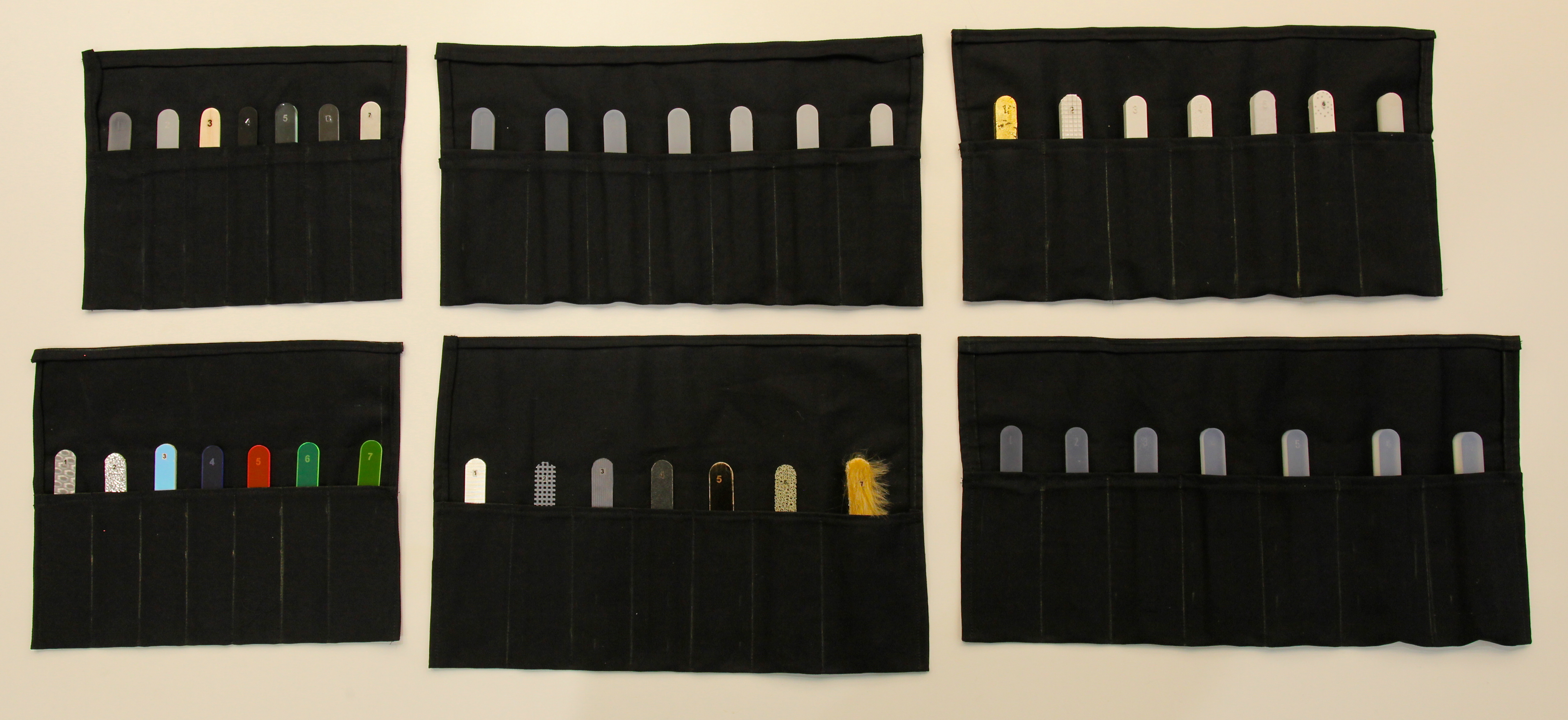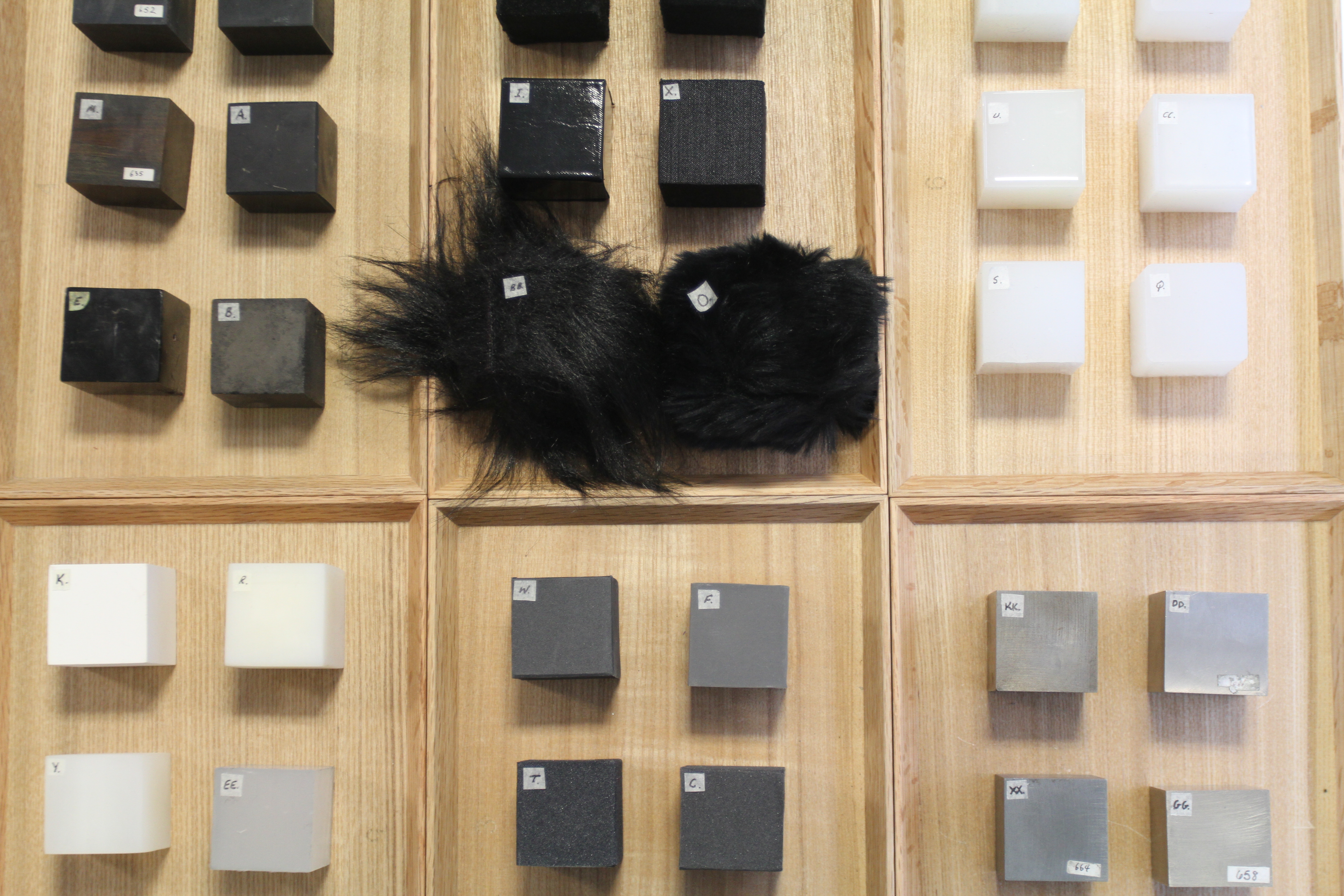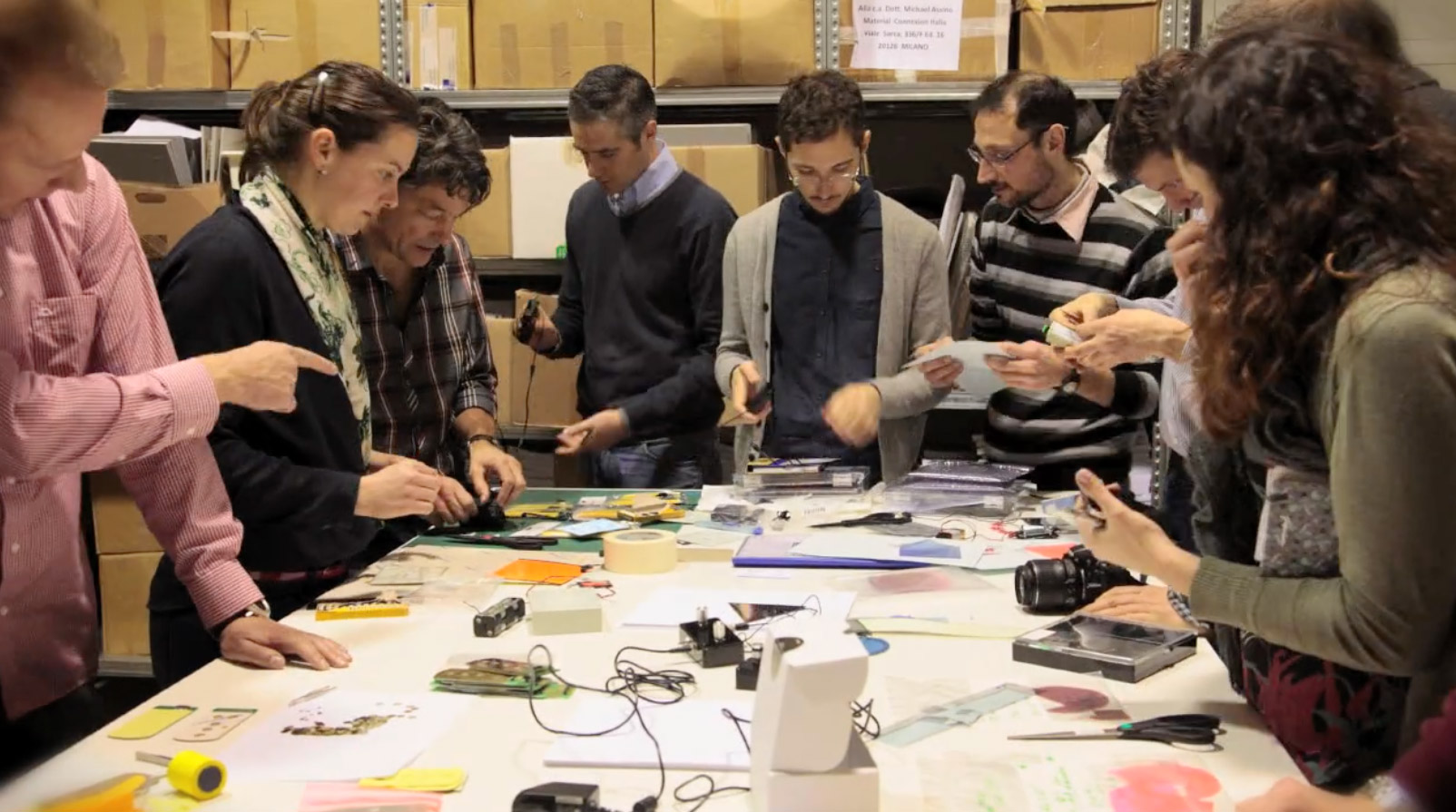Using Physical Samples to Communicate

Designers need to be able to communicate effectively with materials scientists, and vice versa, so that materials can be developed with desired functionalities and properties.
However, materials scientists typically focus on physical parameters such as hardness, elastic modulus and shear strength to predict how a material will perform in technical applications, but tend to be less well-versed in the ways in which materials affect the product experiences of the people that use them.
Equally, the language of materials science is not often taught to designers, so you may struggle to relay your materials requirements back to materials researchers.
This section will introduce you to some tools you can use to communicate across disciplinary boundaries. For a more in-depth discussion, see Wilkes et al. (2016) in the Further Reading section.
Task 1
Materials Scientist(s): Explain what is meant by elastic modulus to the Designer(s)
Designer(s): Explain what is meant by elastic modulus back to the Materials Scientist(s).
Task 2
Watch the Materials & Design Dialogue video.
Task 3

Materials Scientist(s): Assemble a set of material samples that allow you to explain what is meant by toughness to the Designer(s).

Designer(s): Assemble a set of objects that allows you to explain to the Materials Scientist(s) how materials can contribute to a user’s sensory, aesthetic or emotional experience of a product.
Task 4
Both: Discuss the different kinds of knowledge about materials that each of you brings to the collaboration. In what ways are these different approaches complementary?
What kinds of problems might you face when it comes to integrating or communicating your different understandings of materials?
Both: Are there specific tools or ways of communicating that you do not share with each other (e.g. sketches, graphs, narratives)? What terms and communication tools do you share?
Discuss how you might use and develop those shared terms and tools, and avoid those that you do not share, in order to overcome translation issues you may encounter.


